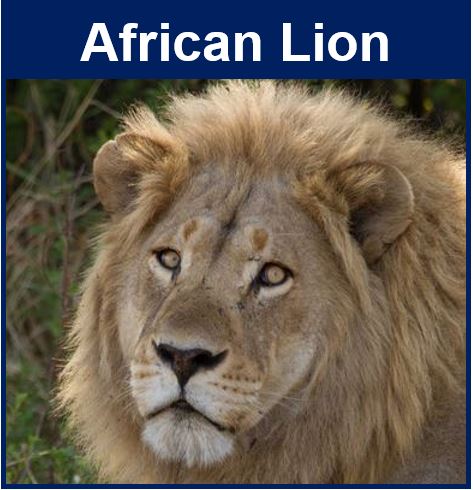Lion populations in most of Africa are declining alarmingly, a new study published in Proceedings of the National Academy of Sciences has shown. However, numbers are climbing in some areas of southern Africa.
The study was carried out by scientists from Oxford University’s Wild CRU, Panthera, Grimsö Wildlife Research Station, the Department of Ecology, Evolution and Behavior at the University of Minnesota, and the IUCN Species Survival Commission Cat Specialist Group.
According to the authors, the number of lions in Central and West Africa is not only falling sharply today, it is expected to plummet by a further 50% in the next twenty years if no major conservation effort is introduced.

Lion populations in East Africa, long considered the species’ main stronghold, are also falling, albeit less rapidly.
The authors also informed that nearly all lion populations that historically numbered 500 individuals or more are in decline.
They estimated the trajectory of lion populations by gathering and analyzing regional population trend data for 47 different lion populations across the continent.
Lions thriving in southern Africa
The analysis showed that not all areas are seeing declining lion populations. Numbers are rising in Zimbabwe, Namibia, Botswana and South Africa.
Lead author Dr. Hans Bauer of WildCRU said:
“These findings clearly indicate that the decline of lions can be halted, and indeed reversed as in southern Africa. Unfortunately, lion conservation is not happening at larger scales, leading to a vulnerable status of lions globally.”
“In fact, the declines in many countries are quite severe and have enormous implications.” He continued, “If resources for wild lands cannot keep pace with mounting levels of threat, the flagship species of the African continent may cease to exist in many countries.”

According to the IUCN Red List of Threatened Species, lions are listed as ‘Vulnerable’. In West Africa, however, the species is considered to be ‘Critically Endangered’.
The authors said their study reaffirms the lion’s conservation status in West Africa, and also suggests that regional assessments give a more accurate and relevant picture of lion populations than do global assessments.
The scientists recommend that in Central and East Africa, the lion be regionally uplisted to ‘Endangered’, while those in southern Africa meet the criteria for ‘Least Concern’.
Co-author, Dr. Luke Hunter, President and Chief Conservation Officer of Panthera. Urged:
“We cannot let progress in southern Africa lead us into complacency. Many lion populations are either gone or expected to disappear within the next few decades. The lion plays a pivotal role as the continent’s top carnivore, and the free-fall of Africa’s lion populations we are seeing today could inexorably change the landscape of Africa’s ecosystems.”
Why have lions have done well in southern Africa?
The authors put the lion’s success in southern down Africa to their reintroduction in small, fenced and intensively managed and funded reserves. The fact that the area has a low population density also helps, as do the significant resources that have gone into conserving of the species.
Dr. Paul Funston, Senior Director of Panthera’s Lion Program, said:
“If we don’t address these declines urgently, and at a massive scale, the intensively managed populations in southern Africa will be a poor substitute for the freely roaming lion populations in the iconic savannahs of East Africa. In our view, that’s not an option.”
Senior author, Prof. Craig Packer, of the University of Minnesota, who is also a member of Panthera’s Scientific Council said:
“Estimating future population trends requires sophisticated forecasting techniques, and we performed one of the most comprehensive statistical analyses of conservation status over such a large scale. The results clearly indicate the need for immediate action across most of Africa.”
Citation: “Lion (Panthera leo) populations are declining rapidly across Africa, except in intensively managed areas,” Hans Bauera, Guillaume Chapron, Kristin Nowell, Philipp Henschel, Paul Funston, Luke T. B. Hunter, David W. Macdonald, and Craig Packer. Proceedings of the National Academy of Sciences (PNAS). October 2015. DOI: doi: 10.1073/pnas.1500664112.
Video – Rebuilding a lion population
This Smithsonian Channel video explains how vital it was to find a mate for ‘Lady’, the last lioness alive in Zambia’s Liuwa Plains National Park, in order to rebuild the area’s population.

